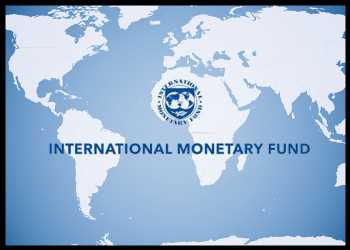Asia To Contribute Nearly 70% Of Global Growth Led By China, India: IMF
The Asia-Pacific region is set to contribute about 70 percent of the global expansion this year, led by the recovery in China and the resilient growth in India that are projected to account for more than half of the world economic output growth, the International Monetary Fund said.
Growth in Asia and the Pacific is projected to increase this year to 4.6 percent from 3.8 percent in 2022, the lender said in the latest regional outlook report for the region, released late Monday.
That is an upgrade of 0.3 percentage point from the projections in the October 2022 World Economic Outlook.
The region is projected to grow 4.4 percent next year, which is a downgrade of 0.2 percentage points from the October forecasts.
Growth in the rest of Asia is expected to bottom out in 2023, in line with other regions, the IMF said.
Domestic demand has remained strong thus far, boosted by China’s reopening despite the weakening external demand, as evidenced by the decline in tech exports towards the end of last year, and monetary tightening, the lender said.
The world economy is set to grow 2.8 percent this year after expanding 3.4 percent last year, the IMF said in the latest World Economic Outlook report released in April. In the January edition, the projection for this year was 2.9 percent.
Global growth is forecast to rise to 3.0 percent next year, which was slightly less than the 3.1 percent predicted in January.
“Asia and Pacific will be the most dynamic of the world’s major regions in 2023, predominantly driven by the buoyant outlook for China and India,” the IMF said.
“The two largest emerging market economies of the region are expected to contribute around half of global growth this year, with the rest of Asia and Pacific contributing an additional fifth.”
The IMF identified spillovers from a greater-than-expected US monetary policy tightening and the supply chain disruptions triggered by geoeconomic fragmentation among the risks to the outlook.
Advanced economies in the region will benefit from the stronger external demand from China, IMF said, adding that this is expected to be largely outweighed by the drag from other domestic and external factors.
Japan’s growth projection for this year was downgraded by 0.3 percentage points from October to 1.3 percent, citing the weaker external demand and investment, and carryover from the sluggish growth in the final quarter of last year.
Growth projections for Australia and New Zealand were lowered to 1.6 percent and 1.1 percent for this year due to weakening domestic demand linked to monetary tightening, rising mortgage payments and lower real disposable income.
Meanwhile, the downturn in the technology cycle is expected to erode growth momentum further in Korea and Taiwan, the IMF said.
China’s growth forecast for this year was raised by 0.8 percentage point from October to 5.2 percent as the rapid economic reopening is expected to result in a strong recovery in private consumption.
The IMF projected structural shifts in China’s economic model, mainly the declining population and slowing productivity growth, to lead to a slowdown in growth to below 4 percent over the medium term, which will be well below historical averages.
Further, China’s growth is expected to be increasingly consumption driven due to the structural re-balancing over time.
“This shift may reduce Asia’s growth momentum significantly given strong trade and supply chain linkages within the region,” the IMF said.
India’s growth momentum is forecast to start slowing this year as softening domestic demand offsets strong external services demand.
The IMF projected the Indian economic growth to moderate slightly from 6.8 percent in 2022 to 5.9 percent this year, which was 0.2 percentage point lower than the October projection.
Growth is forecast to rebound to 6.3 percent next year, which was 0.5 percentage less than the expansion seen in October.
Core inflation is proving to be stickier than expected, the report said, adding that significant uncertainty remains around the path of core inflation.
Underlying inflation could turn out to be more persistent in advanced economies and Asia, the IMF said.
“In Asia, resilient domestic demand and large positive output gaps in some advanced economies” such as Australia, Malaysia, New Zealand, and the Philippines, “uncertain lags in monetary transmission”, and “still-narrowing negative output gaps in some emerging markets like India and Thailand” could contribute to more persistent price pressures, the report said.
“Central bankers in Asia should aim to bring inflation durably back to target, holding a tighter stance for longer to prevent de-anchoring of inflation expectations,” the IMF said.
Source: Read Full Article


